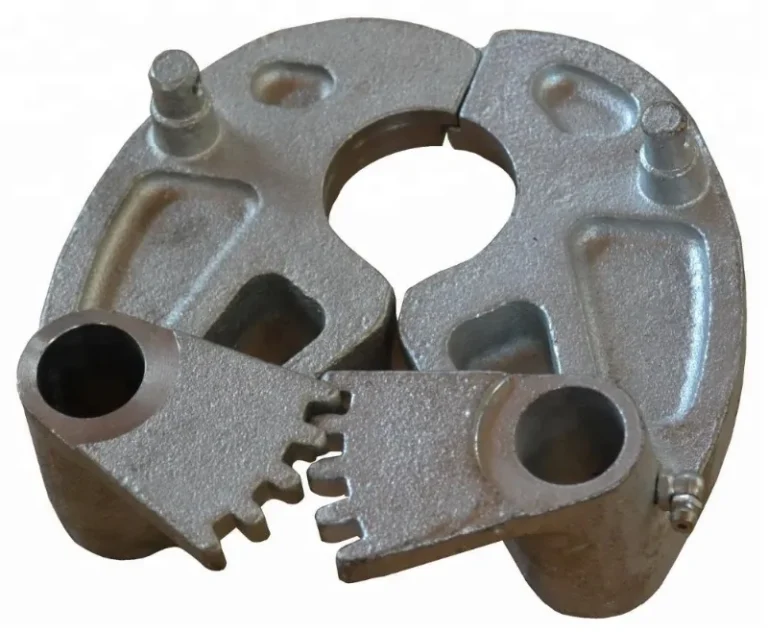Overview of Lifting Loops in Construction
Lifting loops are important tools in construction. They are often used when moving heavy concrete pieces like beams, panels, or large parts of buildings. These loops are fixed into or attached to these parts, giving cranes or other machines a strong point to lift from. Using lifting loops helps move materials safely and in the right place.
Common Applications of Lifting Loops on Job Sites
On job sites, lifting loops are often seen when putting up precast parts. These include concrete walls, floors, beams, and pillars. In modular construction, where whole rooms are built off-site, lifting loops help lift full units. They are also used in building roads, bridges, and tunnels where huge concrete blocks need to be moved and placed correctly. These loops help make construction faster and cut down on how many workers are needed on-site.
Key Benefits of Using Lifting Loops for Heavy Loads
The biggest reason to use lifting loops is safety. They let workers connect heavy parts to cranes without making the structure weak. Lifting loops also save time during setup because they are easy to use. They help keep the weight spread out evenly, which lowers the chance of breaking or cracking the concrete during lifting.
Factors to Consider When Choosing a Lifting Loop
There are many things to think about when picking the right lifting loop. Each point affects how well it works during real job site use.
Load Capacity and Working Load Limits
Always pick a lifting loop that can carry more than the heaviest thing you expect to lift. Never go beyond its rated limit. If a loop is pushed too far, it can bend or break. Good manufacturers test their products in controlled places to make sure they are safe and strong.
Material Strength and Corrosion Resistance
They must be strong and also able to stand up to rust. Galvanized or stainless steel is best when the loop is going to be used outside or near water. Some parts are made using different metal processes like carbon steel forging, alloy steel forging, ductile iron casting, or grey iron casting. These give the lifting loops more strength and toughness for heavy use.
Compatibility with Anchors and Inserts
Lifting loops must match the sockets or inserts that are already built into the concrete parts. If the loop does not fit well, it can pull the wrong way. This can make the load uneven or even cause it to fall during lifting. Always double-check that the lifting loop fits your insert design.
Environmental Conditions and Site Requirements
Job sites can be very different. Some are dry and dusty. Others are wet, salty, or very hot or cold. Pick lifting loops that are made to deal with these conditions. For example, use rust-resistant loops at coastal or rainy locations. In cold weather, make sure the material doesn’t crack when it gets too cold.
Wire Rope Lifting Loops: Design, Strength, and Performance
Wire rope lifting loops are one of the most common types. They are strong but flexible, which makes them easy to use in many different situations.
Construction and Material Composition of Wire Rope Lifting Loops
These lifting loops are made of many thin steel wires twisted together into a rope shape. The ends are closed with metal caps called ferrules to keep the rope secure. This design helps them handle sudden jerks or quick movements better than stiff metal hooks. Even with heavy weights, they keep their shape and don’t snap easily.
Advantages of Wire Rope Loops in Harsh Environments
Wire rope loops can be used in places where the weather is rough. If treated right, they can resist rust and wear for a long time. Since they are not stiff, they can bend slightly. This helps when lifting strange shapes or loads that aren’t flat. For example, when building bridges or tunnels, these loops can be used at angles without a problem.
Inspection, Maintenance, and Replacement Guidelines
Before each use, check the wire rope loop carefully. Look for wires that are breaking, fraying, or rusting. Also, check if the ferrules are loose or if the loop is bent. If any of these things are seen, the loop must be replaced. Damaged wire ropes can snap without warning, which can cause injuries or worse.
How to Select the Right Supplier for Your Project Needs
Getting lifting loops from a trusted supplier is very important. You need loops that are safe and built right. A good supplier also gives advice and support when needed.
Evaluating Quality Standards and Certifications
Pick a supplier that follows known quality rules like ISO-9001. This shows they check their products well. For example, Qingdao Baoqi’s factories are certified under the ISO-9001 system. This means every lifting loop is tested before it is sent out.
Importance of Technical Support and Customization Services
Not every project is the same. Sometimes you need lifting loops that are longer or stronger. Maybe the shape or use is special. A supplier with strong engineering support can make loops just right for your needs. Custom forging parts and precision forging can give the best shape and strength while keeping the loop light.
Lead Times, Export Experience, and Global Delivery Capabilities
A good supplier can ship fast and send products worldwide. This is helpful when projects are far away. BaoQi’s lifting loops and forged parts are now used in countries like Australia, Denmark, Finland, France, UK, Germany, Canada, USA, and parts of the Middle East.
Custom Forging Capabilities from Qingdao Baoqi Intelligent Co., Ltd.
Qingdao Baoqi as a Manufacturer of Forged Construction Components
Founded in 2010, Qingdao Baoqi Intelligent Co., Ltd. is based in Qingdao. It has grown to have four plants that make forged parts used in construction. These include tools for scaffolding, formwork, roof nails, and more.
Expertise in Producing Customized Wire Rope Lifting Loops
BaoQi also makes special wire rope lifting loops to fit tricky or custom building needs. They offer stamping parts manufacturer services and other options for tailor-made parts. These services are good for unique buildings or places with tough lifting requirements.
ISO-9001 Certified Processes Across Four Manufacturing Plants
Each of BaoQi’s four factories uses ISO-9001 processes. That means the company follows strict steps from start to finish. Raw materials are checked, the final product is tested, and only quality goods are sent out. No matter how big or small your order is, BaoQi keeps the standard high.
Frequently Asked Questions (FAQ)
What is a wire rope lifting loop?
It is a flexible loop made from steel wire. It gives a crane a strong point to lift heavy parts like concrete slabs.
How do I know which size wire rope loop I need?
Think about the heaviest thing you will lift. Then, pick a loop that can carry more than that. Always use a certified working load limit (WLL) from your supplier.
Are wire rope lifting loops reusable?
Some are. But you must check them for any damage. If they are frayed or rusty, replace them. Some jobs may need single-use loops for safety.
Can I use wire rope loops outdoors?
Yes, especially if they are galvanized or stainless steel. These types resist rust and work well even when it rains or snows.
Where can I find custom-made wire rope lifting loops?
You can get them from manufacturers like Qingdao Baoqi Intelligent Co.,Ltd. They offer metal casting, forging services, and even stamping parts manufacturer options. All parts are made to fit your building project and meet high-quality standards.










